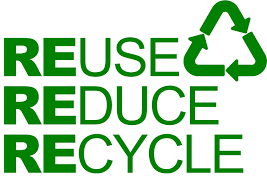By Dr. Marnie Ward, 4-H agent Citrus County
 When was the last time you looked around your house for hazardous materials? Well, take a look inside your cabinets and along the shelves in your garage. Household Hazardous Material (HHM) requires proper storage and disposal. In fact, the improper handling of HHM results in hundreds of emergency room visits every year. What are some of these materials? Well, they include the obvious like drain cleaners, paints, solvents and motor oils; and they also include unused medications, nail polish remover, and personal electronic devices (televisions, laptops, and iPADs).
When was the last time you looked around your house for hazardous materials? Well, take a look inside your cabinets and along the shelves in your garage. Household Hazardous Material (HHM) requires proper storage and disposal. In fact, the improper handling of HHM results in hundreds of emergency room visits every year. What are some of these materials? Well, they include the obvious like drain cleaners, paints, solvents and motor oils; and they also include unused medications, nail polish remover, and personal electronic devices (televisions, laptops, and iPADs).
The Citrus County Central Landfill should be your “go-to” location for information about the proper disposal of HHM, visit their website here;
For more about the proper disposal of electronic devices click here.
In the United States, each citizen disposes about 4.5 lbs of waste every day and considering the population is nearly 314 million people – that’s a lot of waste. Over the past 40 years, landfill managers and regulators have instituted plans and policies to increase the amount of recycling across the county. In fact, roughly 50% of the waste generated is recycled and diverted from landfills. This has been an amazing achievement and a credit to the resolve of individuals to recognize a problem and work on devising a solution. The take away message here is that 1 individual can make a difference.
The youth of our communities have been instrumental in the push to increase recycling. They worked to bring recycling programs to their schools, daycares, and community centers. They have encouraged their parents, teachers, and friends to “put it in the can”. 4-H youth development programs provide a framework for the adult/mentor support these community oriented young people need to meet their goals.
Are you interested in impacting waste generation/recycling in your community? Well, contact the Citrus County 4-H office and learn more about our programming.
Oklahoma Extension and Oklahoma 4-H have some good ideas for recycling textiles and fabrics, check them out Here.

 0
0

Comments:
October 21, 2021
Major thankies for the blog post.Thanks Again. Keep writing.
October 5, 2021
Really enjoyed this blog post.Much thanks again. Fantastic.
October 5, 2021
Really enjoyed this blog post.Much thanks again. Fantastic.
July 11, 2019
Follow our Facebook to be notified about volunteer opportunities: https://www.facebook.com/ncbs.ifas.ufl.edu
July 11, 2019
Hello mam ! I want to do volantier with you in marine biology field! Plz reply me.
September 4, 2018
Great information. Thank you.
April 26, 2018
Absolutely! Programs to assist with down payment and closing costs vary depending on where the person is looking to purchase. Potential home owners can contact the housing services agency to learn what programs might be available.
April 26, 2018
In addition to the downpayment, total out-of-pocket costs to buy a home can easily run 6% to 8% of the purchase price, factoring in things like prepaying for a homeowners insurance policy and funding escrow accounts for taxes and more. That said, there are state-backed programs that can provide assistance to potential homebuyers with downpayment and funds for closing costs. These typically come in the form of low- or no-interest second mortgage loans but sometimes in the form of outright, no repayment grants, and may cover some or all of the up-front costs needed to purchase a home. Regardless, good financial habits are key to successful homeownership. The ability to save, budget and plan for future expenses are needed skills, and the homebuyer education courses that often accompany these offers are a great place to start.
March 8, 2018
Thank you! As a financial counselor I have been working on trying to get everyone in my county to have an emergency fund of at least $500.00. Start small, but dream big. Sarah
March 7, 2018
Wonderful web site. Plenty of useful info here. I am sending it to several friends ans also sharing in delicious. And certainly, thanks for your sweat!
February 19, 2018
This actually answered my drawback, thank you!
February 18, 2018
Excellent, this subject is so important and can change the world if corrected. I’m an ex-banker and current financial advisor. My passion is to help people understand saving for retirement. Keep up the great work! Garry
February 4, 2018
This is not a common disease in sabal palms, and it is most likely to occur on recently transplanted sabal palms because some degree of trunk wounding typically occurs during handling.
January 31, 2018
Palm trees grown in the landscape appear carefree, but they are susceptible to many diseases, insects and nutritional problems. Avoid many of these problems by following the recommended cultural practices that help keep plants healthy and vigorous. More information on how to grow outdoor palms successfully is provided in HGIC 1019,
Comments are closed.